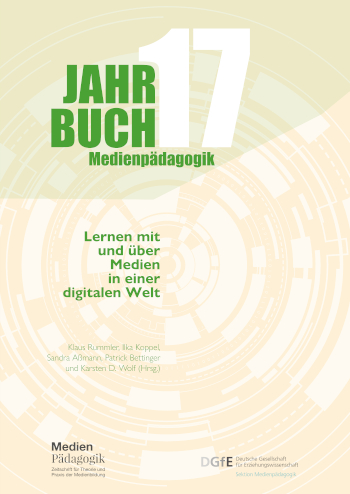Abstract
The mandatory implementation of the Swiss national curriculum, the "Lehrplan 21" including computer science education, raises an important question: How can a course overcome common negative dispositions of elementary school preservice teachers towards computer science? In 2017 the School of Education FHNW (PH FHNW) introduced a Scalable Game Design-based module consisting of a science course followed by a didactics course. This module is mandatory for all elementary school pre-service teachers. To assess the efficacy of this module an instrument consisting of a 14 questions questionnaire was used to compute effect sizes. In the first two cohorts about 1000 teachers were trained in four states in Switzerland. Initially, Scalable Game Design was developed for the professional development of in-service teachers in the US. The goal of this research is to explore if the core concept of Scalable Game Design – acquiring Computational Thinking through the design of games and simulations – could be effectively transferred from in-service teacher development to pre-service teacher education.
References
Basawapatna, Ashok R., Alexander Repenning, Kyu Han Koh, und Hilarie Nickerson. 2013. «The Zones of Proximal Flow: Guiding Students through a Space of Computational Thinking Skills and Challenges». In ICER ’13 Proceedings of the Ninth Annual International ACM Conference on International Computing Education Research, 67. ACM Press. https://doi.org/10.1145/2493394.2493404.
Basawapatna, Ashok, Alexander Repenning, und Mark Savignano. 2019. «The Zones of Proximal Flow Tutorial: Designing Computational Thinking Cliffhangers». In Proceedings of the 50th ACM Technical Symposium on Computer Science Education, 428–34. Minneapolis MN USA: ACM. https://doi.org/10.1145/3287324.3287361.
Benjamini, Yoav, und Yosef Hochberg. 1995. «Controlling the False Discovery Rate: A Practical and Powerful Approach to Multiple Testing». Journal of the Royal Statistical Society: Series B (Methodological) 57 (1): 289–300. https://doi.org/10.1111/j.2517-6161.1995.tb02031.x.
Blömeke, Sigrid. 2005. «Medienpädagogische Kompetenz. Theoretische Grundlagen und erste Befunde». In Kompetenzdiagnostik: Theorien und Methoden zur Erfassung und Bewertung von beruflichen Kompetenzen, herausgegeben von Andreas Frey, Reinhold S. Jäger, und Ursula Renold, 1. Aufl., 76–97. Landau: Verlag Empirische Pädagogik.
Cohen, Jacob. 1992. «A Power Primer». Psychological Bulletin 112 (1): 155–59. https://doi.org/10.1037/0033-2909.112.1.155.
CollegeBoard. 2017. «AP Computer Science Principles.» The College Board. https://apstudent.collegeboard.org/apcourse/ap-computer-science-principles/course-details.
Csikszentmihalyi, Mihaly. 1990. Flow: The Psychology of Optimal Experience. New York: Harper Collins Publishers.
Deutschschweizer Erziehungsdirektoren-Konferenz (D-EDK), Hrsg. 2014. «Lehrplan 21: Medien und Informatik». D-EDK. http://v-ef.lehrplan.ch/container/V_EF_DE_Modul_MI.pdf.
diSessa, Andrea. 2000. Changing Minds: Computers, Learning, and Literacy. Cambridge, MA: The MIT Press.
Felderer, Michael, und Ruth Breu. 2018. «Von Autofahrern und Autobauern – Zur Rolle der Informatik in der (Medien)bildung». In Medienpädagogik. Herausforderungen für Lernen und Bildung im Medienzeitalter, herausgegeben von Theo Hug, 77–83. MEDIEN – WISSEN – BILDUNG. Innsbruck: innsbruck university press. https://www.uibk.ac.at/iup/buch_pdfs/9783903187306.pdf.
Fishman, Barry J., William R. Penuel, Anna-Ruth Allen, Britte Haugan Cheng, und Nora Sabelli. 2013. «Design-Based Implementation Research: An Emerging Model for Transforming the Relationship of Research and Practice». Yearbook of the National Society for the Study of Education 112 (2): 136–56. http://isls-naples.psy.lmu.de/video-resources/guided-tour/15-minutes-penuel/fishman_penuel.pdf.
Hill, Carolyn J., Howard S. Bloom, Alison Rebeck Black, und Mark W. Lipsey. 2008. «Empirical Benchmarks for Interpreting Effect Sizes in Research». Child Development Perspectives 2 (3): 172–77. https://doi.org/10.1111/j.1750-8606.2008.00061.x.
Hmelo-Silver, Cindy E., Ravit Golan Duncan, und Clark A. Chinn. 2007. «Scaffolding and Achievement in Problem-Based and Inquiry Learning: A Response to Kirschner, Sweller, and Clark (2006)». Educational Psychologist 42 (2): 99–107. https://doi.org/10.1080/00461520701263368.
Koh, Kyu Han, Hilarie Nickerson, Ashok Basawapatna, und Alexander Repenning. 2014. «Early Validation of Computational Thinking Pattern Analysis». In Proceedings of the 2014 Conference on Innovation & Technology in Computer Science Education - ITiCSE ’14, 213–18. Uppsala, Sweden: ACM Press. https://doi.org/10.1145/2591708.2591724.
Lamprou, Anna, und Alexander Repenning. 2018. «Teaching How to Teach Computational Thinking». In Proceedings of the 23rd Annual ACM Conference on Innovation and Technology in Computer Science Education - ITiCSE 2018, 69–74. Larnaca, Cyprus: ACM Press. https://doi.org/10.1145/3197091.3197120.
Papert, Seymour. 1996. «An Exploration in the Space of Mathematics Educations». International Journal of Computers for Mathematical Learning 1 (1): 95–123. https://doi.org/10.1007/BF00191473.
Repenning, Alexander. 2017. «Moving Beyond Syntax: Lessons from 20 Years of Blocks Programing in AgentSheets». Journal of Visual Languages and Sentient Systems 3 (1): 68–91. https://doi.org/10.18293/VLSS2017-010.
Repenning, Alexander, Anna Lamprou, Nicolas Fahrni, und Nora Escherle. 2018. «Scalable Game Design Switzerland». Herausgegeben von Torsten Brinda, Ira Diethelm, Sven Kommer, und Klaus Rummler. MedienPädagogik: Zeitschrift für Theorie und Praxis der Medienbildung 33 (Medienpädagogik und Didaktik der Informatik): 27–52. https://doi.org/10.21240/mpaed/33/2018.10.31.X.
Repenning, Alexander, Anna Lamprou, Serge Petralito, und Ashok Basawapatna. 2019. «Making Computer Science Education Mandatory: Exploring a Demographic Shift in Switzerland.» In Proceedings of the 2019 ACM Conference on Innovation and Technology in Computer Science Education, 422–28. Aberdeen Scotland Uk: ACM. https://doi.org/10.1145/3304221.3319758.
Repenning, Alexander, Ryan Grover, Kris Gutierrez, Nadia Repenning, David C. Webb, Kyu Han Koh, Hilarie Nickerson, u. a. 2015. «Scalable Game Design: A Strategy to Bring Systemic Computer Science Education to Schools through Game Design and Simulation Creation». ACM Transactions on Computing Education 15 (2): 1–31. https://doi.org/10.1145/2700517.
Sawilowsky, Shlomo S. 2009. «New Effect Size Rules of Thumb». Journal of Modern Applied Statistical Methods 8 (2): 597–99. https://doi.org/10.22237/jmasm/1257035100.
Vygotsky, Lev. S. 1978. Mind in Society: The Development of Higher Psychological Processes. Edited by Michael Cole, Vera John-Steiner, Sylvia Scribner and Ellen Souberman. Harvard University Press.
Wang, Feng, und Michael J. Hannafin. 2005. «Design-Based Research and Technology-Enhanced Learning Environments». Educational Technology Research and Development 53 (4): 5–23. https://doi.org/10.1007/BF02504682.
Wing, Jeannette M. 2014. «Computational Thinking Benefits Society». 40th Anniversary Blog - Social Issues in Computing, New York: Academic Press (blog). 10. Januar 2014. http://socialissues.cs.toronto.edu/2014/01/computational-thinking/.
Wing, Jeannette M. 2006. «Computational Thinking». Communications of the ACM 49 (3): 33–35. https://doi.org/10.1145/1118178.1118215.

